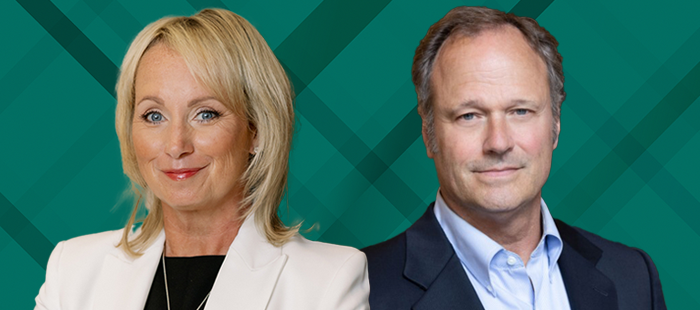Reducing Barriers for MBA Students With Disabilities
- Two out of three MBA students say they need accommodations, but more than 25 percent never request them.
- Students with disabilities cite stigma, lack of flexibility, lack of awareness, and difficulty communicating with faculty and peers as barriers they face on campus.
- Many accommodations that would help students the most, such as additional time to complete exams and increased access to online course materials, do not cost anything to implement.
Earlier this year, the Toronto-based nonprofit Access to Success released its report titled “State of Disability Inclusion in MBA Programs,” which explores how MBA programs can do more to empower their students with disabilities. The report is based on responses from 184 prospective, current, and recently graduated MBA students, all of whom identified as having some form of disability. Access to Success is dedicated to supporting future leaders with disabilities; granting scholarships to MBA students with disabilities; and running Canada’s first accelerator for startups developing technologies that support accessibility, mental health, and healthy aging.
According to the survey, two out of three MBA students with disabilities say they need accommodations to get the most out of their educational experiences—but more than a quarter of them never make this request of their schools. The reasons they cite for not requesting accommodations include a lack of knowledge about formal processes for such requests, a lack of diagnostic paperwork, the fear of stigmatization, and “internalized ableism.”
Facing Stigma, Lacking Flexibility
Respondents also noted that they felt that there was a stigma surrounding disability on their campus. They said that they faced a number of barriers in their educations, including “lack of flexibility; inaccessible academic, social, and recruiting practices; and a lack of awareness and representation.” In addition, they cited difficulties such as communicating with faculty and their peers, participating in class discussions, and juggling challenging workloads.
One student pointed to a disconnect between what schools taught in their classrooms and their actions: “It is frustrating to hear diversity talked about in the classroom with disabilities not included.”
Sixty-five percent said that completing standardized tests such as the GMAT presented special challenges. One visually impaired respondent noted that she had made arrangements to take the GRE online, only to find that the online system disabled her screen-magnifying software. Another spent hours on hold with a testing company to schedule testing, only to be told that the few slots that allowed extra time for those with learning disabilities were filled.
Among the report’s other findings:
- More than half of respondents noted that they were given no formal opportunity to disclose their disabilities during the application process—even so, 46 percent did so anyway. Of that group, half said that they found it beneficial to disclose their disability, while 40 percent were uncertain.
- Approximately 30 percent said they did not know whether their schools had any formal processes in place for them to request accommodations.
- More than half also reported that their disability negatively impacted their social lives, citing casual social interactions with peers (68 percent) and informal social gatherings (62 percent) as their biggest challenges. Many noted that they struggled with social anxiety, fatigue, and “exhaustion with ongoing self-advocacy demands.”
- Twenty-two percent of graduates surveyed reported that they were underemployed, while 18 percent said they were involuntarily unemployed.
- Graduates with mental disabilities were “slightly less satisfied” with their job experiences that those with physical disabilities.
One student pointed to a disconnect between what schools taught in their classrooms and their actions: “It is frustrating to hear diversity talked about in the classroom with disabilities not included.” Another student emphasized that it would make all the difference if business schools were more deliberate about their student support policies: “I think that when a university is open about their disability programs and resources it makes you feel more comfortable and welcome in the environment.”
Many Accommodations Are Low- or No-Cost
Students cited 25 accommodations that they would welcome in their programs. Some, such as wheelchair-accessible facilities and speech-to-text and screen-reading software, might require some investment. However, 15 of the top 25 forms of assistance that students cited as important did not cost anything—they just required faculty to be more flexible with students. These options included more time to complete exams and assignments, breaks during long class sessions, and more access to lecture notes and reading before class.The report divided its recommendations to business schools into four categories:
- Awareness and visibility (raising faculty awareness, engaging in outreach, profiling students with disabilities in marketing materials, hiring faculty with disabilities, featuring individuals with disabilities in learning materials)
- Resources (campus center, formal support groups, access to mentors, formal on-campus advocate)
- Accommodations (elimination of standardized entrance exams, flexible deadlines, remote access to lectures, formal questions about whether accommodations are needed on applications)
- Training (anti-bias and disability awareness training for the campus community)
Despite facing challenges in their studies, two out of three respondents were still satisfied with their MBA experience. But they still were calling for schools to do more to understand and address the needs of their students with disabilities.
“While business schools have made meaningful strides in fostering diversity and inclusion in their programs, little is known about the number and experiences of people with disabilities in MBA programs,” the report’s authors write. “We cannot address what we do not know. Now, we hope we can change that.”






